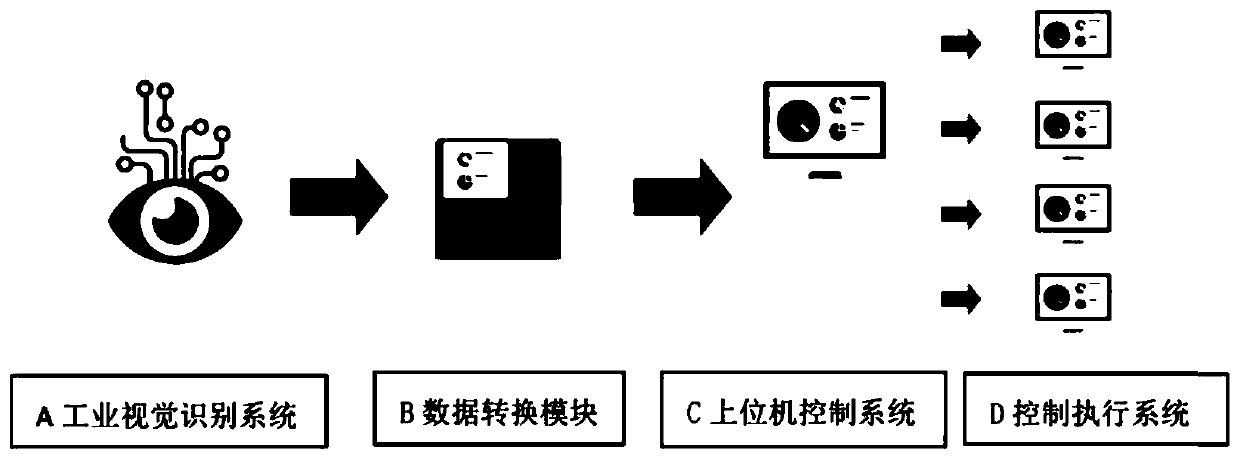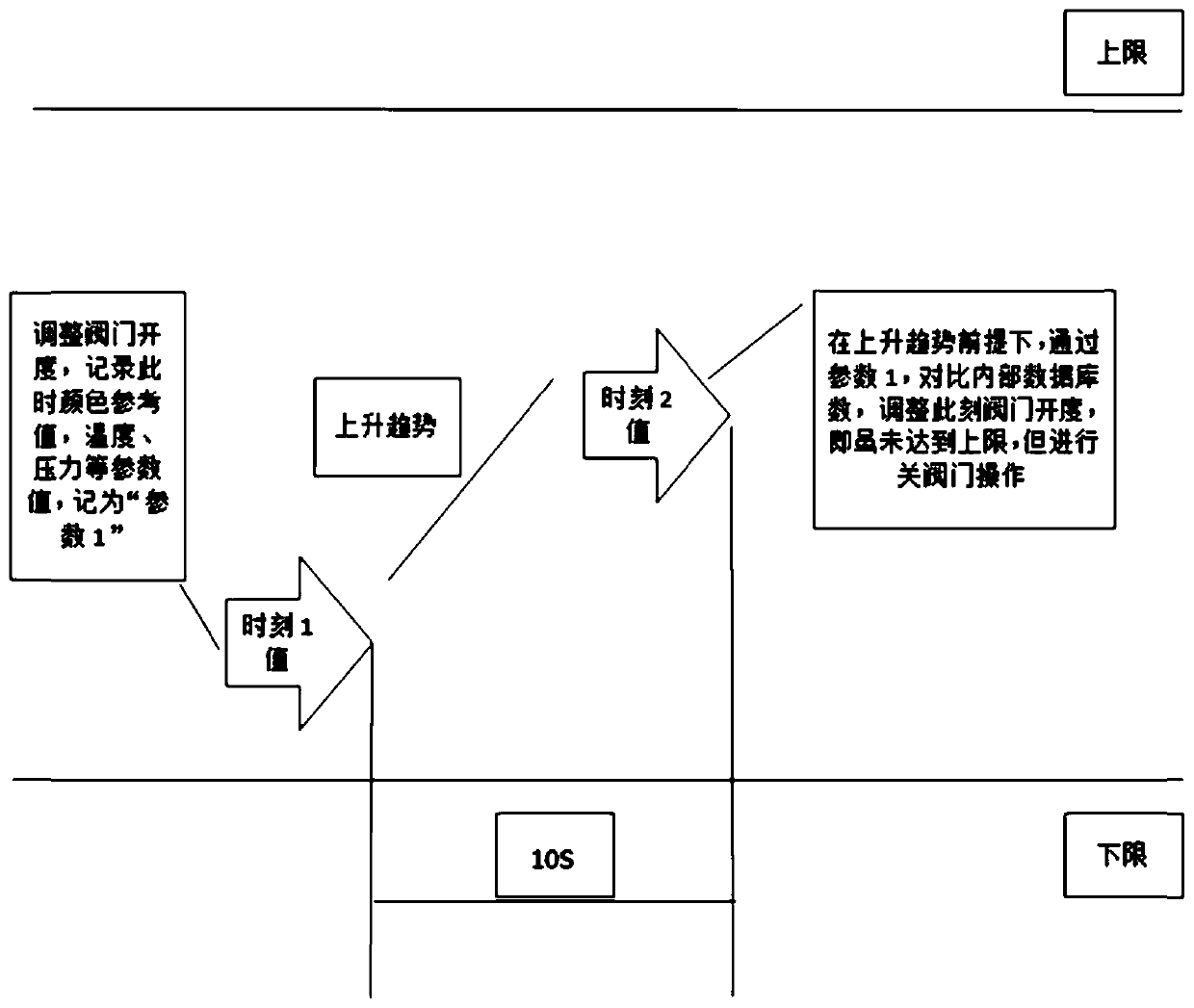Chlorination control method based on visual recognition in bromine distillation process, and apparatus
A visual identification and control method technology, applied in the direction of distillation adjustment/control, bromine, bromine/hydrogen bromide, etc., can solve the problems affecting the quality of bromine, the amount of chlorine can not be accurately controlled, etc., to ensure the output and quality, eliminate Influenced by human factors, the effect of saving human and financial resources
- Summary
- Abstract
- Description
- Claims
- Application Information
AI Technical Summary
Problems solved by technology
Method used
Image
Examples
Example Embodiment
[0032] The present invention will be further elaborated and illustrated below in conjunction with the drawings and specific embodiments. The technical features of the various embodiments of the present invention can be combined accordingly without conflict with each other.
[0033] Such as figure 1 Shown is the overall equipment for the bromine distillation process provided in a preferred embodiment of the present invention. The main body of the equipment is a distillation tower, and the inside of the distillation tower is used for the distillation and purification reaction of chlorine and steam. Two transparent windows are opened on the side wall of the distillation tower opposite to each other. One window is used to install the industrial visual recognition system, and the other window is installed with a light source to fill the reactants inside the tower. The image obtained by the industrial visual recognition system is clearer. The industrial visual recognition system can ...
PUM
 Login to View More
Login to View More Abstract
Description
Claims
Application Information
 Login to View More
Login to View More - R&D
- Intellectual Property
- Life Sciences
- Materials
- Tech Scout
- Unparalleled Data Quality
- Higher Quality Content
- 60% Fewer Hallucinations
Browse by: Latest US Patents, China's latest patents, Technical Efficacy Thesaurus, Application Domain, Technology Topic, Popular Technical Reports.
© 2025 PatSnap. All rights reserved.Legal|Privacy policy|Modern Slavery Act Transparency Statement|Sitemap|About US| Contact US: help@patsnap.com



